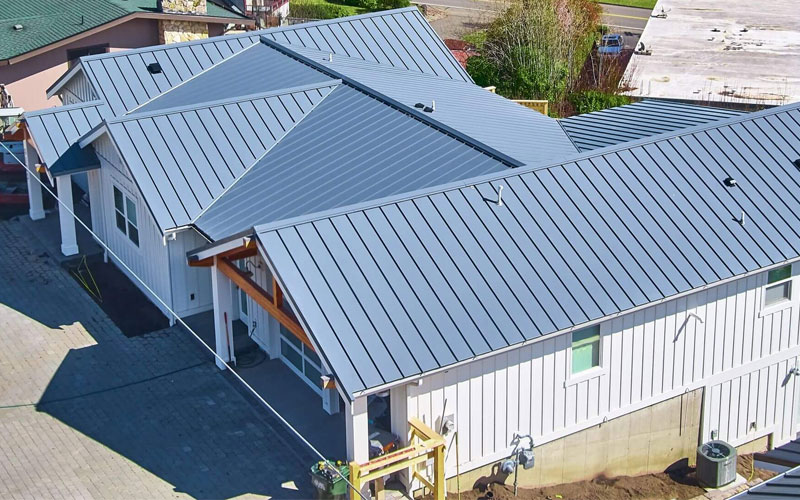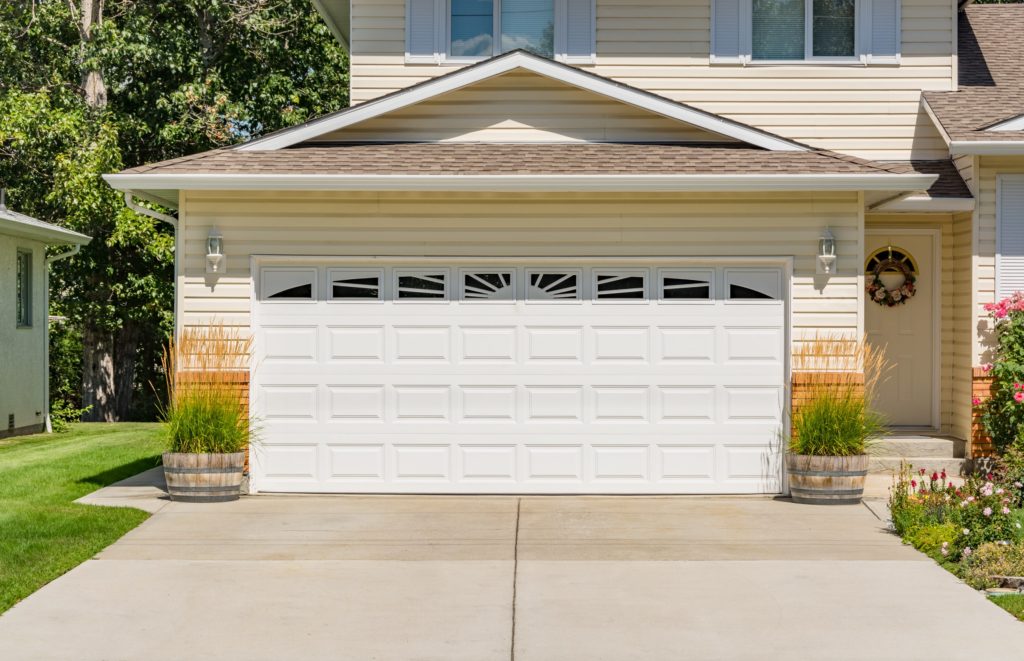A Comprehensive Guide To Residential-Roofing Maintenance and Repair
Are you a homeowner looking to maintain, repair, or replace your residential-roofing? If so, you’ve come to the right place! In this comprehensive guide, we will be covering everything from the different types of materials used in residential roofs and how to maintain them to common signs telling you that it’s time for a replacement. Whether it’s a minor wear-and-tear issue or something more extensive, we’ll provide insights on what to look out for and how best to fix whatever problems arise. We’ll also address any safety concerns associated with roofing maintenance and repairs as well as other general home maintenance tips along the way.
Upgrade Your Roof
Say goodbye to thatch and mud – residential roofs have evolved! Today, there are a variety of materials to choose from, each with its pros and cons. Let’s delve into the top contenders for residential roofs:
- Asphalt Shingles: Affordable, durable, and easy to install, asphalt shingles reign as the most popular choice. Available in various colors and styles, they offer fire and wind resistance. Yet, they’re not the greenest option and may require replacement every 15-30 years.
- Clay and Concrete Tiles: Ideal for warm climates and Mediterranean-style homes, clay and concrete tiles are long-lasting and energy-efficient, keeping your house cool. They also boast fire resistance but come with a weighty downside – additional structural support is necessary. On the pricier side, they offer durability for 50+ years.
- Metal Roofing: Embrace durability and longevity with metal roofs. Resistant to weather, fire, and pests, they can last 50+ years. Energy-efficient as well, these roofs reflect heat away from your home. Just be prepared for potential noise during intense storms and a higher price tag compared to asphalt shingles.
- Wood Shingles and Shakes: Get a natural, charming look with wood shingles and shakes. These eco-friendly and energy-efficient options provide insulation. But they require more maintenance, facing risks like rot, insect damage, and fire. Expect a replacement every 15-25 years.
Ultimately, choosing the right material for your residential roof hinges on factors like climate, budget, and personal preference. Armed with this knowledge, you’re ready to make an informed decision for your home’s roof upgrade.

Roofing Company In My Area
5 Clear Signs It’s Time to Replace Your Roof
Protecting your home from the elements starts with a solid roof. But even the sturdiest roof won’t last forever. Here are the top signs that indicate it’s time for a roof replacement:
- Age: Most roofs only last 15 to 25 years. If yours is getting up there in age, it’s wise to start planning for a replacement.
- Visible damage: Cracked, broken, or missing shingles are red flags that your roof’s days are numbered. This damage can allow moisture to seep in and cause costly water damage inside your home.
- Leaks: Water stains on your ceiling or walls, along with puddles in your attic, are surefire signs of a leaking roof. This could be caused by damaged shingles or other structural issues.
- Rising energy bills: Higher bills might be a result of poor roof insulation. An old or damaged roof won’t keep your home properly insulated, leading to wasted energy and increased costs.
- Sunlight in the attic: If you can see sunlight shining through your attic’s roof boards, it’s time to act fast. This means your roof is deteriorating and requires immediate replacement.
Keep an eye out for these warning signs and take action if you spot any of them. Call a trusted professional roofer for an roof inspection and expert advice on whether it’s time for a new roof.
Essential Roof Maintenance Tips to Protect Your Property
Want to keep your home or building in top condition? It all starts with maintaining your roof. A well-kept roof not only safeguards you from the elements but also increases your property value. Follow these steps to ensure your roof stays in great shape:
- Regular Inspections: Stormy weather can wreak havoc on your roof, so it’s vital to inspect it regularly. Check for missing or damaged tiles, shingles, and other roofing materials. Don’t forget to inspect the flashing, those metal strips that cover the joints where the roof meets walls or chimneys.
- Clean Gutters, No Exceptions: Dirty gutters can lead to water damage both on your roof and inside your home. Make a habit of cleaning your gutters and removing any debris that could block water flow.
- Trim Trees for Safety: Majestic trees can turn detrimental if their branches overhang or touch your roof. Trim any branches that pose risks of damage or falling during storms.
- Eliminate Moss and Algae: Shaded areas are a breeding ground for moss and algae on your roof, which can cause serious damage and reduce its lifespan. Use a moss killer or a mixture of bleach and water to eradicate any growth.
- Repair Minor wear and tear Promptly: Don’t let small cracks, leaks, or other issues escalate into major problems. Address any signs of wear and tear as soon as you spot them to prevent further damage.
By following these steps, you’ll keep your roof in exceptional condition and avoid costly repairs down the line. If you’re uncertain about inspecting or repairing your roof, trust a professional roofer to assist you.
Don’t Ignore Minor Roof Damage
Don’t underestimate the importance of addressing even minor roof damage. Neglecting it can lead to more serious and expensive issues later on. Luckily, there are several effective strategies you can use to repair minor roof damage and ensure the safety and security of your home. Take a look at these handy tips to easily and confidently fix any minor roofing damage.
- Spot the Damage: The first step in repairing minor roof damage is identifying the problem area. Inspect your roof for visible signs like cracked or missing shingles, loose or damaged flashing, or cracked tiles. Look for anything that seems out of place or abnormal. If you’re unsure, it’s best to hire a professional roofing contractor to assess the damage.
- Clean the Surface: Before you begin repairing, it’s crucial to clean the damaged area. Use a broom or pressure washer to remove dirt, debris, and loose materials. This ensures that the repair materials adhere properly to the surface.
- Replace or Repair: Depending on the extent of the damage, you may need to replace or repair the damaged materials. For example, if there are cracked or missing shingles, replace them with new ones. If the flashing is damaged, repair or replace it with new flashing. Use the same materials as the original roof for a seamless and durable repair.
- Seal It Up: To prevent water from entering your home through minor leaks or cracks, apply a sealant to the damaged area. There are various options available, such as silicone or asphalt-based sealants. Follow the manufacturer’s instructions and use enough sealant to fully cover the damaged area.
- Consult a Pro: If you’re unsure about the extent of the damage or how to repair it, it’s always best to call a professional roofing contractor. They have the expertise, tools, and knowledge to identify and fix all types of roofing problems. They can also provide valuable advice on roof maintenance to prevent future issues.
By following these tips, you can effectively repair minor roof damage and ensure the safety and security of your home.

Residential Roofer
Choose the Right Roofer
Hiring a professional roofer shouldn’t be a gamble. With these guidelines, you can find a qualified and reliable contractor who will deliver exceptional work.
- Research Matters: Start by looking for local roofers with a solid reputation. Discover what their previous clients have to say about their services through their website, social media pages, and online reviews.
- Verify Credentials: Ensure your roofer is licensed, insured, and certified for your area. This protects your property from accidents or damages.
- Experience Counts: Look for roofers with extensive experience in the specific type of roofing you need. This guarantees they can handle any challenges that may arise.
- Get Multiple Estimates: Don’t settle for the first roofer you find. Compare prices and services offered by obtaining estimates from different contractors. Avoid surprises down the road.
- Ask for References: A reputable roofer will gladly provide a list of satisfied customers who can vouch for their workmanship and professionalism. Don’t hesitate to request references.
- Communication is Essential: Choose a roofer who values clear communication and regular updates. This ensures a smooth project and your satisfaction.
With these guidelines, you can confidently hire a professional roofer known for high-quality workmanship and reliability.
Don’t overlook the importance of choosing the right roof for your home. It’s a decision that requires careful thought and consideration. By exploring your options, making repairs, and doing preventative maintenance, you’ll see the payoff in the long run. Plus, take the time to find reputable contractors who can deliver quality results within your budget. Your roof is an investment that will protect your property for years to come, no matter the season. So why wait? Start your research now, ask questions, check references, and get quotes from trusted professionals. This way, you can have peace of mind during repairs or installations on your property.
https://www.google.com/maps?cid=465871782046421571




